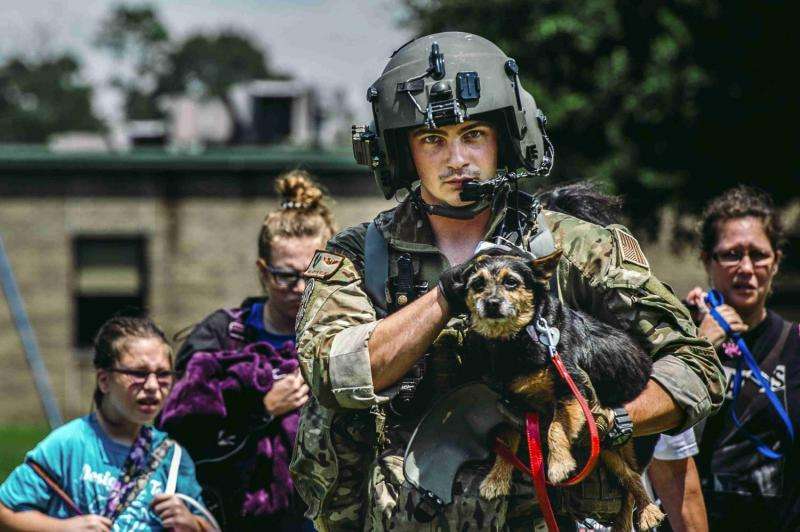What happens to pets after a natural disaster?

After a natural disaster, images of destruction cover our newsfeeds. Most of these focus on the destruction of the landscape, or on the resulting human suffering. In any disaster where people suffer and die, pets and livestock will suffer and die, too. This has grave consequences for the animals, of course, but also for their owners. In 1999, Hurricane Floyd caused 2.9 million pet and livestock deaths, and thousands more owners lost their pets. The aftermath of Hurricane Katrina was particularly devastating. The Louisiana SPCA estimates that 15,500 animals required rescue, and that 80 to 85 percent of these animals were never reunited with their owners.
In light of these facts, the ASPCA conducted the first-ever nationwide assessment of emergency response capabilities for animals, the results of which were reported in the Journal of Homeland Security and Emergency Management in an article titled "The National Capabilities for Animal Response in Emergencies (NCARE) Study: An Assessment of U.S. States and Counties."
This survey of officials who oversee emergency preparedness in U.S. States and counties – led by Dr. Vic Spain, veterinary epidemiologist for the American Society for the Prevention of Cruelty to Animals (ASPCA), investigated which American communities are prepared to deal with the animal victims of an emergency and how and where emergency response planning can be improved.
The results of the study were mixed—much progress has been made, but there is still much to be done. Most states and about half of high-population cities and counties had organizational infrastructure for managing animals in a disaster, such as a state or county animal response team. In contrast, only about one in four smaller counties had such an organization, even in regions of the country prone to frequent natural disasters. People with pets are more likely than people without pets to refuse to evacuate in an emergency situation, endangering their lives, as well as the lives of the people sent to rescue them. Only a little more than half of U.S. counties, however, reported having plans for emergency shelters in which pets and people could be housed together.
"Enhancing animal response capabilities at the local level through an established, skilled and actively engaged animal response team that is recognized by emergency management saves lives. In our experience, most animal deaths occur within the first 24 to 48 hours of disaster onset, when local response is essential. As we have also seen recently with Hurricane Harvey, with heartbreaking images of people fleeing their homes—often with their pets in their arms—animal response teams are a crucial element of disaster preparedness," said co-author Dick Green, senior director of disaster response for the ASPCA.
A loss of animal life not only has an economic, but also a psychological impact. Studies show that pet loss after a disaster can be devastating for humans. Fifty-six percent of Americans now have pets. In the future, due to population growth and the increase of not only the percentage of Americans living in disaster-prone areas, but also the number of natural disasters, the problem is growing.
In 2006, the Pets Evacuation and Transportation Standards (PETS) Act was passed. This act required states asking for FEMA assistance to have plans to evacuate pets and service animals. Communities with well-developed animal response plans, along with trained and equipped animal response teams, are typically better able to protect resident livestock and companion animals during a disaster, with fewer animals lost, higher human evacuation compliance rates, and a greater percentage of pets staying with their families.
More information: C. Victor Spain et al. The National Capabilities for Animal Response in Emergencies (NCARE) Study: An Assessment of US States and Counties, Journal of Homeland Security and Emergency Management (2017). DOI: 10.1515/jhsem-2017-0014
Provided by De Gruyter



















